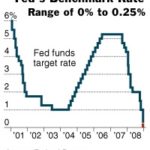Homeownership Has It’s Advantages
An often mentioned benefit of homeownership is its tax benefits. However, like most IRS-related topics, understanding how the benefits work is not always crystal clear.
In general, homeowners are entitled to two home-related tax deductions — one for annual mortgage interest paid, and one for real estate tax bills paid.
Not everyone is eligible, though. Some of the exclusionary traits include total amount borrowed, and whether or not the home is a primary or secondary residence.
Calculate Your Savings
The official IRS publication is filled with details but, in general you can calculate your approximate mortgage interest tax deduction. Just use the following math:
- Sum of your annual mortgage interest and real estate taxes paid
- Find your tax rate on the IRS tax bracket schedule
- Multiple your tax rate by the answer from step 1
Yes, super simple. But pretty darn accurate.
An Example of Calculating
Let’s say a homeowner paying $20,000 in 2008 for both mortgage interest and real estate taxes. The homeowner has a 28% tax bracket and may be given $5,600 in tax credits.
These mortgage interest tax deductions is one reason why loan officers make reference to “after-tax mortgage rates”. An after-tax mortgage rate is effective interest rate, after tax deductions.
You can use the following formula to calculate your “after-tax mortgage rate”:
(After-Tax Mortgage Rate) = (Mortgage Rate) * (1 – Marginal Tax Rate)
Using the formula, let’s use the example above:
5% x ( 1 – 28% ) = 3.6%
Or, the calculations you’d put in a calculator:
(.05) * (1 – .28) = (.036)
So, the same homeowner with a 5.000% mortgage rate, therefore, has an after-tax mortgage rate of 3.600%.
Because not every homeowner is eligible for home-related deductions. It also may not make sense for all homeowners to take this deduction. You should talk with your personal accountant before making any tax-related decisions. If you need a suggestion on who to connect with, please let me know.
(Photo Kudos: Google Images)









